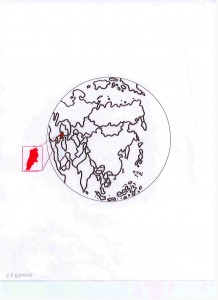LEBANON
A. THE COUNTRY
The Republic of Lebanon is a fertile, mountainous state in western Asia,
on the eastern shore of the Mediterranean Sea. Lebanon has a unique
political system, known as confessionalism with power-sharing based on
religious communities. The religious demographics are out of sync with
Parliamentary representation causing a lot of disillusionment. The
country seems in constant political turmoil, with influence and
interference by Syria, Iran and Saudi Arabia. It is a commercial
centre, but tourism has not boomed as hoped. Many question the
long-term economic viability of this strife-torn and debt-ridden nation.
B. THE PEOPLE
The population is ~4,255,000 and the official language Arabic. French
and English are widely used. The entire nation has been deeply
traumatized, especially Christians, and many have emigrated en masse for
economic and security reasons. No official census has been taken since
1932. ~93.5% are Arabs, ~6.5% Other (Armenian, Kurd).
C. RELIGIONS AND CHRISTIANITY/PENTECOSTALISM
Lebanon remains the only land in the Middle East where all are legally
free to change their religious affiliation. Of the 18 recognized
religious communities four are Muslim (Shi’as are the fastest growing),
one Druze (a secretive religion that came out of Islam), one Jewish and
twelve Christian. All of the following figures are estimates:
~58.96% are Muslim, ~31.97% claim to be Christian, ~7% Other, ~2.05%
Non-religious, ~0.02% Baha’i.
In the Christian category:
~23.9% are Catholic, ~7.32% Orthodox, ~0.35% Protestant, ~0.23%
Independent, <0.01% Anglican.
Evangelicals represent ~0.5% of the population.
Charismatics represent ~0.5% and of those <0.1% are Pentecostals.
Donna Siemens
References:
http://en.wikipedia.org
Operation World, Jason Mandryk. Colorado Springs: Biblica Publishing, 2010.

